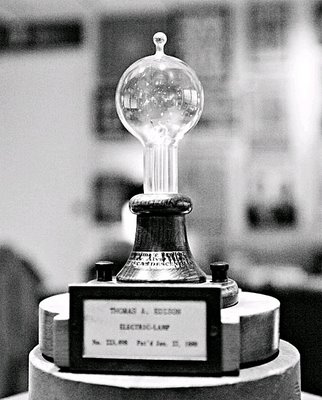News
Marketer Magazine: On The Record: Conducting Strong Interviews with the Media
See Through It All: The Importance of a Mission Accomplished
Plans. They win battles, create corporate dynasties and shift history. They are essential in preparing for your future, an approaching hurricane or a trip to the grocery.
And best laid plans? Well, they’re just the best. They define your goals, identify the tools you’ll need, give you a budget and a deadline, help you track your progress and measure your ups and downs along the way. Best of all, they’re great reference material for planning your next big plan.
But as the Zen philosopher Basho once said:
A plan left inactive is like having a winning lottery ticket in your kitchen drawer. I mean that’s great, I’m happy for you, really. But until you get in your car and take it downtown to cash it, it’s worthless.
OK, maybe that wasn’t Basho. But the point is the same: good plans are a dime a dozen. But executing them is where the money is.
Many would argue that the sole reason we create strategic plans is that it allays our fear of the unknown. If that’s true, then it stands to reason that the greatest feature of any plan isn’t its strategy but its flexibility. History has shown us that plans that go according to plan without a single hiccup are few and far between.
On the surface that seems lousy. But the reality is that plans designed to roll with the punches produce far more superior results.
Failure allows us to regroup and begin again, each time a little smarter. It forces us to think outside the box. It pushes us beyond our comfort level as problem solvers. It creates an invaluable trove of information detailing what worked and what did not.
Pretty much everything we have and everything we know came from plans rife with missteps.

Consider the classic example from 1957, when two Detroit researchers experienced 408 miserable failed attempts before, on their 409th try, they successfully formulated a commercial solvent and degreaser for those tough household chores.

Or in 1953 when the Rocket Chemical Company nailed their water displacement lubricant after 39 stumbles and reminded themselves and the world that perseverance is a virtue by naming their product WD-40.

Then there’s Thomas Edison. Once deemed by his teachers as “too stupid to learn anything,” he nearly proved them right until, after more than 1,000 false starts, he finally turned us on to the working light bulb.

Or, how about James Dyson’s story of rewriting his plans and retesting more than 5,200 vacuum prototypes prior to finding one that truly sucked?
The list is immense and contains most of the greatest inventions and achievements of all time. Proving that with pliant plans, good things can happen to good people. Eventually.
